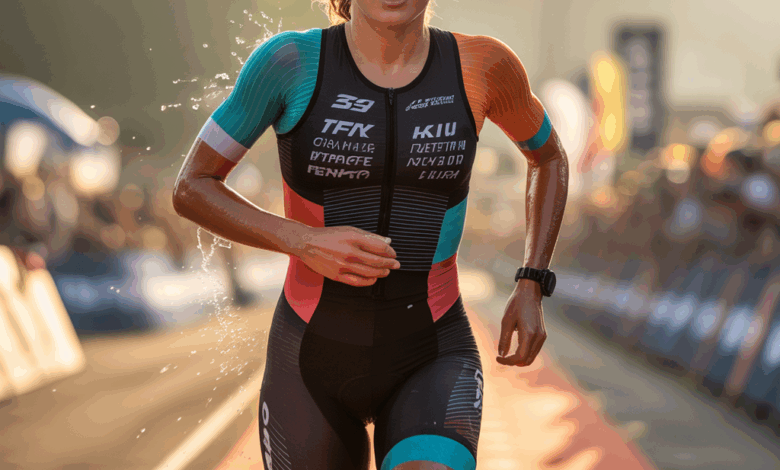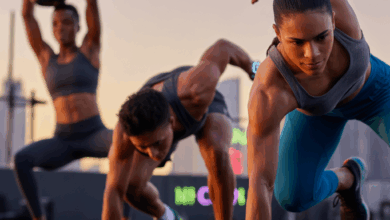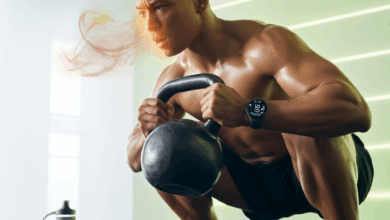Triathlon Clothing For Your Next Race

Picture this: you’re at the swim start, heart racing, wetsuit zipped down to your waist, and you realize your race-day outfit hasn’t been tested outside the shop. Sound familiar? Choosing the right triathlon clothing for your next race can turn pre-race jitters into smooth confidence — and shave precious minutes off your time.
Why triathlon clothing matters (more than you think)
Triathlon gear isn’t just fashion — it’s performance. The right triathlon kit reduces drag in the swim, improves comfort on the bike, speeds transitions, and prevents chafing on the run. Prioritizing moisture-wicking, breathable fabrics, proper fit, and smart layering will keep you focused on pacing and execution instead of wardrobe mishaps.
Key performance features to look for
- Quick-dry, moisture-wicking fabrics to prevent stay-wet weight.
- Flatlock seams and anti-chafe panels to avoid irritation on long rides and runs.
- Aerodynamic fit and fabric for the bike leg (aero jerseys, skinsuits).
- Minimal, quick-access pockets for gels and race essentials.
- Appropriate insulation or thin wetsuit options for water temperature.
Choosing the right pieces: swim, bike, run and transitions
Swim: wetsuit vs swimskin
Wetsuits provide buoyancy and warmth in colder open water; swimskins are lighter, faster options for warmer races or draft-legal events. Practice sighting and taking off your wetsuit in a pool session so transition time doesn’t spike on race day.
Bike: triathlon suit or separates?
Tri suits are a popular one-piece choice because they’re designed for all three disciplines — they reduce transition time and fit snugly for better aerodynamics. Separable tops and tri shorts give more flexibility for comfort and post-swim warmth. Consider a cycling-specific chamois that balances padding with a minimal feel for running afterwards.
Run: breathable layers and footwear
Look for shorts and tops with breathable mesh and quick-dry liners. If you use a tri suit, test its run comfort during brick workouts. Footwear matters — race-day shoes should already be well broken in; don’t try a new pair on the day of the race.
Transitions: speed is in the seams
- Practice removing your wetsuit and putting on your helmet while clipped into bike shoes.
- Use elastic laces and quick-release shoe systems to save seconds.
- Keep a small towel in transition to remove excess water if needed.
Practical tips to avoid race-day clothing disasters
- Test everything: wear your full race kit on at least two long brick workouts. Train in the same suit, shoes, and socks you’ll race in.
- Break in new items before race day. Even small seams or new elastic can cause blisters or chafing.
- Use anti-chafe balm on high-friction areas (neck, underarms, inner thighs).
- Pack duplicates: extra socks, a spare race top, and a simple first-aid kit in transition.
- Consider compression leg sleeves or socks for recovery and improved circulation post-race.
Training gear checklist (race week and race day)
- Tri suit or top and shorts (worn during at least two training sessions)
- Wetsuit or swimskin (practice putting on/off)
- Helmet, sunglasses, and bike shoes (cleared and fitted)
- Running shoes (broken in) and breathable socks
- Race belt, elastic laces, and nutrition ready in pockets
- Towel, sunscreen, and a light jacket for pre-race warmth
Workout variations to complement your race clothing choices
Training in the same clothing you’ll race in is essential. Mix these workouts into your plan to simulate race conditions and test equipment:
- Brick workouts: 45–90 minute bike followed immediately by a 20–40 minute run to practice comfort and pacing in your tri suit.
- Open-water sets: intervals with sighting drills and practice starts while wearing your wetsuit.
- Threshold bike sessions: 3×10 minute efforts to test aerodynamics and hydration systems on long climbs or flats.
- Fast-finish runs: long run with the last 20 minutes at race pace to simulate end-of-race effort in your chosen footwear.
Real-world training example
Sarah, a first-time Olympic triathlete, cut three minutes from her transition times after practicing wetsuit removal and switching to elastic laces. She completed multiple 45–30 bricks in her tri suit to confirm fit and comfort, and noted that testing her race shoes on brick runs eliminated blister issues on race day.
Healthy lifestyle tips that improve fit and performance
- Sleep: aim for 7–9 hours nightly in the two weeks leading up to race day for optimal recovery and skin resilience.
- Hydration: keep daily fluid intake steady; dehydration can change how clothing fits and increase chafing.
- Nutrition: follow your usual race fueling strategy in training to know how gels and pockets work with your kit — consult our nutrition guides for plans and timing.
- Weight and strength: maintain functional strength training and core work to improve posture in aero positions and reduce clothing rub during long efforts.
Choosing triathlon clothing for your next race: final decision guide
Match your kit to race conditions: water temperature dictates wetsuit use, anticipated weather decides layering, and race length guides padding choices. If you’re unsure, a lightweight, breathable tri suit tested in training gives the best balance of comfort and speed for most distances.
Frequently Asked Questions
1. What should I wear for a first sprint triathlon?
For a sprint triathlon, a comfortable tri suit or a fitted top with tri shorts works well. Use a thin wetsuit if the water is cool. Practice a quick transition using elastic laces and pack minimal items in T1 to reduce time.
2. Do I need a wetsuit for every open-water race?
No—wetsuit rules depend on water temperature and race regulations. Wetsuits provide buoyancy and warmth in colder water, but can be restrictive if you’re not used to them. Try a wetsuit during training swims to see how it affects your stroke and transitions.
3. How do I prevent chafing in a tri suit?
Prevent chafing by choosing suits with flatlock seams, testing the suit on long brick workouts, applying anti-chafe balm to high-friction areas, and ensuring a proper fit (not too tight, not too loose). Also, wash new suits before the race to remove manufacturing residues that can irritate skin.
Conclusion — Ready to race in confidence?
Triathlon clothing for your next race is more than fashion — it’s a performance decision. Choose breathable, quick-dry fabrics, practice in your chosen kit during brick sessions, and fine-tune transitions to shave time. Test gear, prioritize comfort, and follow recovery and nutrition basics to feel and perform your best on race day.
Want tailored swim-bike-run gear advice or a training plan that integrates race-day clothing tests? Check out our workout routines and wellness tips pages, then pack your bag, test your kit, and go race with confidence. Tell us what distance you’re racing below — we’ll help you pick the right kit.





